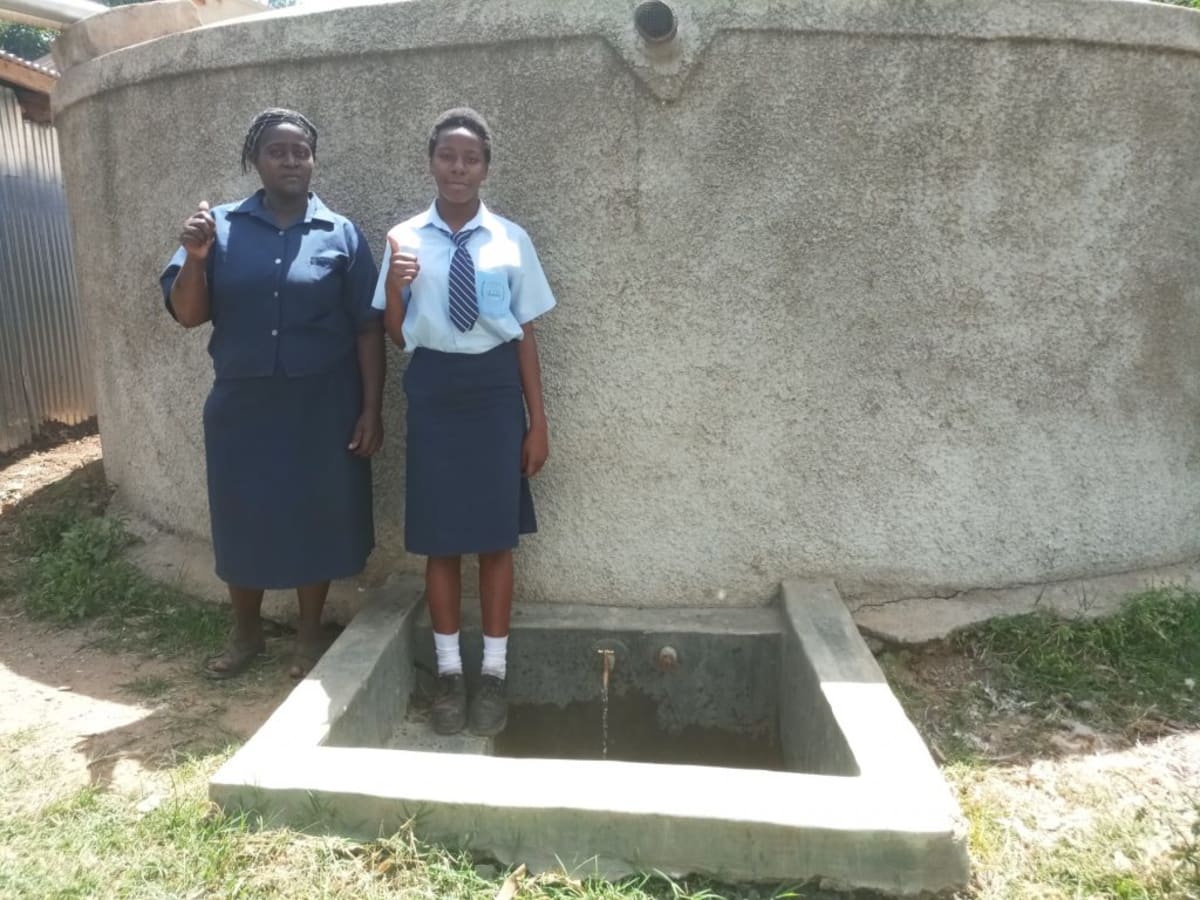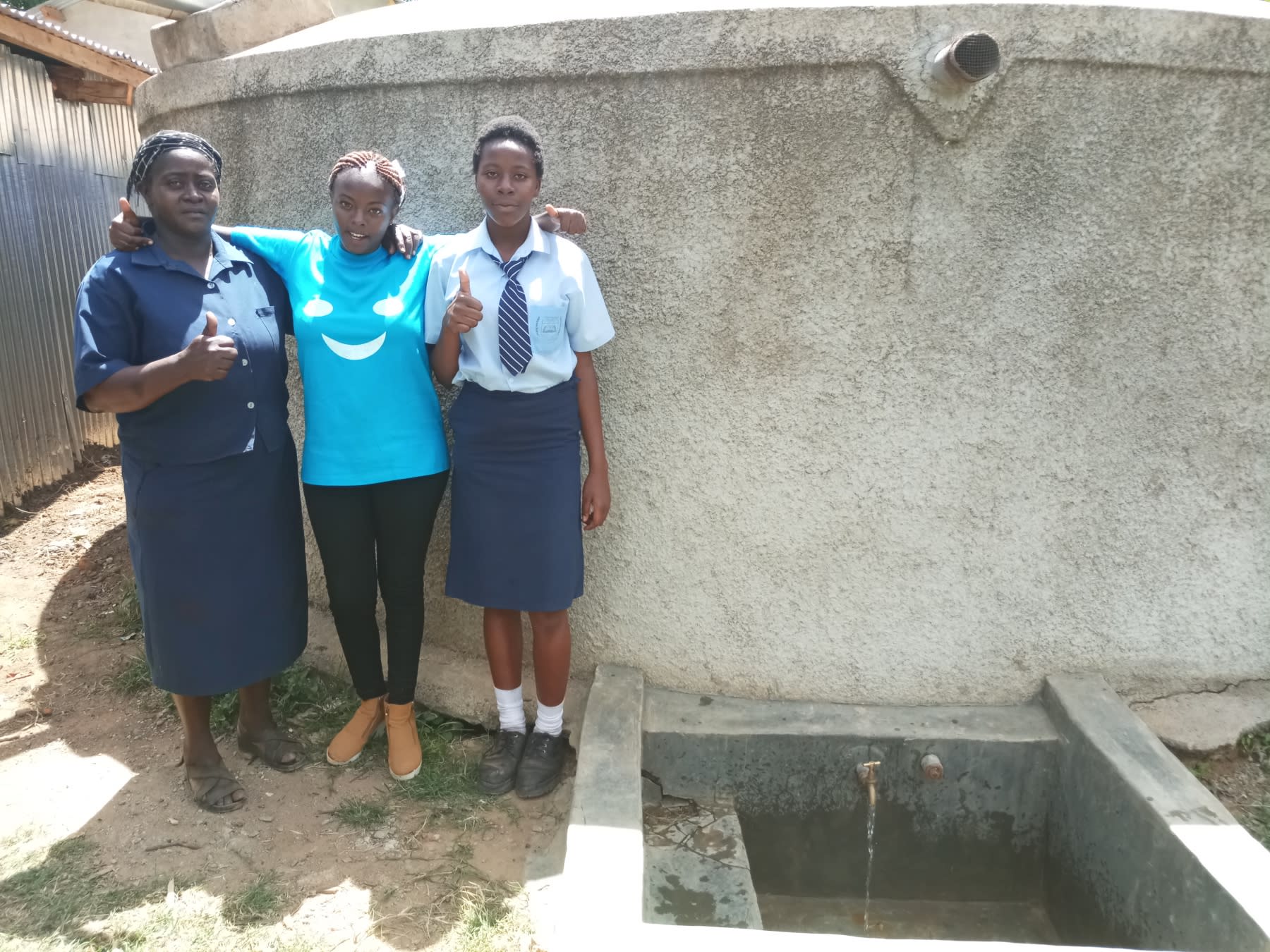Welcome to the School
St. Patrick's Ikonyero Secondary School is located in Ikonyero Village, Shiyunzu sub-location, Butsotso, Lurambi of Kakamega County. It began at St. Augustine Parish in the early 90s. As the students gradually increased, they had to move to grass-thatched classrooms donated by Ikonyero Primary School.
It was officially registered in 1995. They later managed to build four classrooms of their own on a new piece of land. Enrollment was only 16 students at that point! An exponential increase in enrollment began after one of their students excelled and entered university. Since then, the institution has grown to reach a population of 765 students: 333 girls and 432 boys. It has a staff of 24 males and 18 females, bringing the overall school population to 807 people. However, the population will rise even more once the new form one students join high school this term. The deputy principal predicts that there will be at least 200 form one students, confident that there will be over 1,000 people at the school this term.
(Editor's Note: While this many people may have access on any given day, realistically a single water source can only support a population of 350-500 people. This community would be a good candidate for a second project in the future so adequate water is available. To learn more, click here.)
Students arrive at 6:45AM to start morning study hall that goes from 7 to 8AM every Tuesday and Thursday, with assembly meetings every Monday and Friday. Being an institution strongly anchored in Christian values, a church service for students and staff is held every Wednesday morning. There are normal classes until lunch with two breaks for drinking tea that helps ease hunger.
A mixture of maize and beans is served for lunch every Monday, Tuesday and Friday. The students eat rice and beans every Wednesday, then they end the week with ugali, kale, and meat. Students play games after class on Monday and Tuesday, clubs every Wednesday, societies every Thursday, and cleaning activities on Friday.
There are no boarding facilities in this institution, but its students come from many distant places. These children stay with their relatives until the national examinations. Boys from impoverished families have sleepovers in the classrooms since their parents or guardians cannot afford extra kerosene for the lamps to be used for studies at night. They take advantage of the electricity in the school to stay in classrooms reading or having group discussions. "Sometimes they sleep on the desks for a short time and then wake up to proceed with studies, and then rush home between 5 and 6AM to bathe and get breakfast before returning for the morning preps in school,” the deputy principal said. Teachers cannot allow girls to sleep at school because of fear that the students will be tempted to indulge in sexual activities at night. "Moreover, going back home to shower very early in the morning is extremely risky for girls in this area where a lot of rape cases committed early in the morning and very late in the evening have been reported," he added as he explained why the situation never allows for girls to do homework from school.
Most of the parents undertake casual labor to earn a living. Some are peasant farmers and others are motorists who depend on commission, all of who do not earn much by the close of each day. "People that keep this school running are able parents whose children perform poorly in the national examinations. Therefore, the only good performing day school they can get around is Ikonyero," said the deputy headteacher. "Otherwise, capable parents cannot bring their children here, they take them to those good and developed boarding schools," he continued. Despite challenges, the school has attracted many students because it has earned a special place in the hearts of many parents that are proud to identify with it as an academic giant in the region. The students have been trained to obey the rigorous learning schedule that leaves them no room to wander around and lose direction in life. The administration has upped their game by providing meals that can accommodate students from different sociocultural and economic classes.
Mark Ashikuku heard about this school and paid it a visit to see if his relative could attend. When he got there, students were running out the gate with plastic containers to fetch water from the primary section. He recently had a spring in his community transformed into a clean water source, and thus reached out to staff for help once again.
Water Situation
The school spent a good amount of money to tap water from the Lake Victoria North Water Service Board, but it never serves them: the taps are always dry, and they assume that the pipes were tampered with. All of the school and Board's attempts to rectify the problem have failed terribly. All the same, even if the taps were in good condition, there would still be a water shortage because it is rare for water to flow through the taps on any given day. Kakamega is known to go without tapped water for two weeks at a time! A 10,000-liter plastic tank was bought to help alleviate the water shortage, but its capacity is much too small to serve the large student population. Therefore, the administration requested they be allowed to draw water from a borehole in the primary section.
The primary section couldn't turn the older students away, but this kindness has caused them problems. Students wait in long lines to get water. Moreover, the primary section is quite a distance from the secondary school. A lot of study time is thus wasted, and academic performance has decreased.
Sanitation Situation
The male students have eight latrines with a urinal outside. Part of their latrine block has collapsed, rightly making them fear using the others. Girls have eleven latrines of which two are missing doors. "We have been paying for the exhauster to empty these latrines frequently but now the best we can do is help these children get new ones because the ones we have started sinking. I think they have served their purpose, please help us," said the deputy principal.
There is only one place for students and staff to wash their hands. Imagine the line if everybody actually washed their hands! The garbage here is thrown all around, and the compost is eaten by dogs.
Plans: Hygiene and Sanitation Training and Hand-Washing Stations
Training will be held for two days. The facilitator will use PHAST (participatory hygiene and sanitation transformation), ABCD (asset-based community development), CTC (child to child), lectures, group discussions, and handouts to teach health topics and ways to promote good practices within the school. The CTC method will prepare students to lead other students into healthy habits, as well as kickstart a CTC club for the school. This CTC club will oversee the new facilities, such as hand-washing stations, and make sure they are kept clean and in working condition. The two hand-washing stations will be delivered to the school, and the club will fill them with water on a daily basis and make sure there is always a cleaning agent such as soap or ash.
Plans: Rainwater Catchment Tank
A 50,000-liter rainwater catchment tank will be constructed on school grounds. Teachers, students, and parents will gather the local materials needed for this project, including sand, ballast, bricks, and hardcore. This contribution will fuel a sense of responsibility for the school and community to take care of their new facilities. Once materials are mobilized, the WEWASAFO team will arrive to lead the construction effort. Once construction wraps up, the tank will begin collecting valuable rainwater that we will disinfect with chlorine; water that is safe for drinking, cooking, cleaning, and everything else that students need! Students will no longer waste class time walking to and waiting in line at a shared borehole. And with proper monitoring and repairs, we’ll make sure the rainwater catchment tank is an adequate safe water source.
Plans: VIP Latrines
Two triple-door latrines will be constructed, providing three new latrines for each gender. Latrine materials will be mobilized the same way as the tank, ensuring the school feels these facilities are truly theirs. And with a rainwater catchment tank nearby, there will be enough water to keep them clean.
Deputy Principal Fredrick Muhani left us with a picture of the great need here. "We need more water and latrines here, water is life and therefore a school without enough of it suffers a lot due to poor sanitation and hygiene in the school. Many of the students suffer from diarrhea because they do not wash their hands after visiting the toilets and also the food that students take is not hygienically prepared due to the staffs who prepare it do not take hygiene seriously thus cause harm to the students. We shall really appreciate if you help us," he said.

 Rainwater Catchment
Rainwater Catchment
 Rehabilitation Project
Rehabilitation Project























